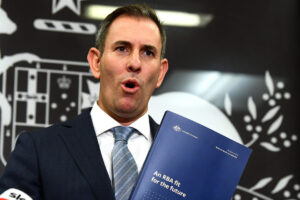The latest unemployment figures show the RBA has failed Australians
The Reserve Bank last week chose to keep interest rates high even as more people are losing their jobs.
Today’s June labour force figures were bad news for everyone except those in the Reserve Bank, who would be celebrating the unemployment rate rising from 4.1% to 4.3%. Last week the RBA monetary policy board had the opportunity to cut interest rates and help keep unemployment low and the economy growing. Instead it chose to keep rates at a level that they know would actually slow the economy.
To an extent, the RBA’s choice was unsurprising. The RBA actually wants more people to lose their jobs. They desire this due to a misguided and cruel belief that there needs to be more people unemployed in order to keep inflation around 2.5%.
Well today the RBA got its wish. Unemployment in June rose from 4.1% to 4.3% – the biggest jump for 14 months and the second biggest increase since the end of 2021.
The labour force figures highlight that not only has the RBA monetary policy board pursed a nonsensical monetary policy, they have also completely misread the economy in a manner that calls into question the board’s competence.
In its statement last week the board noted that “the March quarter national accounts confirmed that domestic demand has been picking up over the past six months.” This was completely wrong.
The March quarter figures showed that domestic demand in the first three months of this year grew just 0.18% – the weakest growth for more than 3 years. Similarly, after an increase in household spending in the last three months of 2024, driven mostly by people seeking sales, household consumption in the first three months of this year grew just 0.4% – around half the long-term average.
But while these figures should have been enough to give the RBA pause for concern and realise the economy was slowing, today’s labour force figure reveal even more starkly how badly the board has misread the economy.
The first half of this year has seen employment growth slow dramatically. In the last 6 months of 2024 employment grew by 2.7%, whereas in the first half of this year growth slowed to just 1.25%.
In May and June a mere 909 people gained employment – hardly a sign of a labour market that needs slowing.
The RBA says in its statement that “maintaining price stability and full employment is the priority”, but it is clear that it believes “full employment” involves more people being out of work than is currently the case.
For over 3 years now, the Reserve Bank has been trying its best to have more people lose their jobs so that it can say it has done what is needed to get inflation below 3%. But even with the monthly inflation rate at 2.1% and the quarterly rate at 2.4% the RBA monetary policy board has not been content.
Its decision last week to keep rate on hold was a cruel response to a weakening labour market and economy. They failed to keep to their mandate of ensuring full employment and instead sentenced more Australians to losing their jobs.
Between the Lines Newsletter
The biggest stories and the best analysis from the team at the Australia Institute, delivered to your inbox every fortnight.
You might also like
Another hold likely. So, what was the point of the RBA review?
Will the RBA cut interest rates tomorrow? Probably not. It’s Groundhog Day and they’re locked into repeatedly making to same mistake over and over again. A mistake that the recent RBA review criticised them for making just before the pandemic.
When targeting inflation, the RBA misses more often than it hits
With the fight against high inflation now over, will the Reserve Bank fail to learn the lessons of the past and allow inflation to fall below 2%?
Let’s celebrate the new normal of unemployment below 4%
Those arguing that Australia cannot sustain unemployment below 4.5% without rising prices and wages have been found to be completely wrong. And it is time they admitted it.

